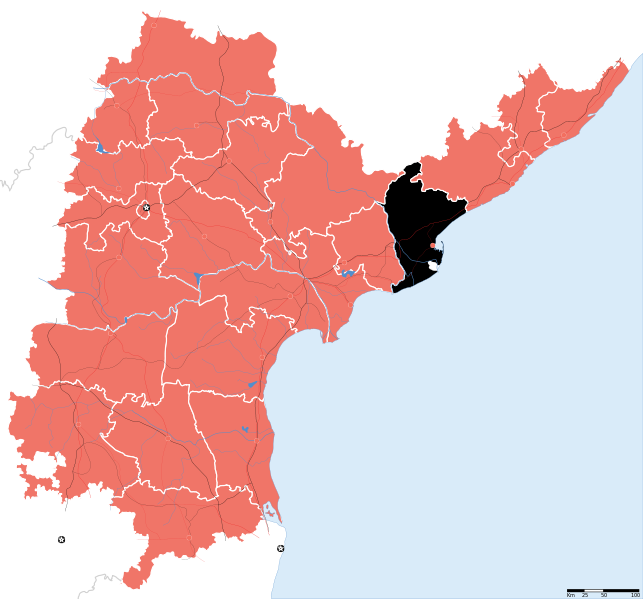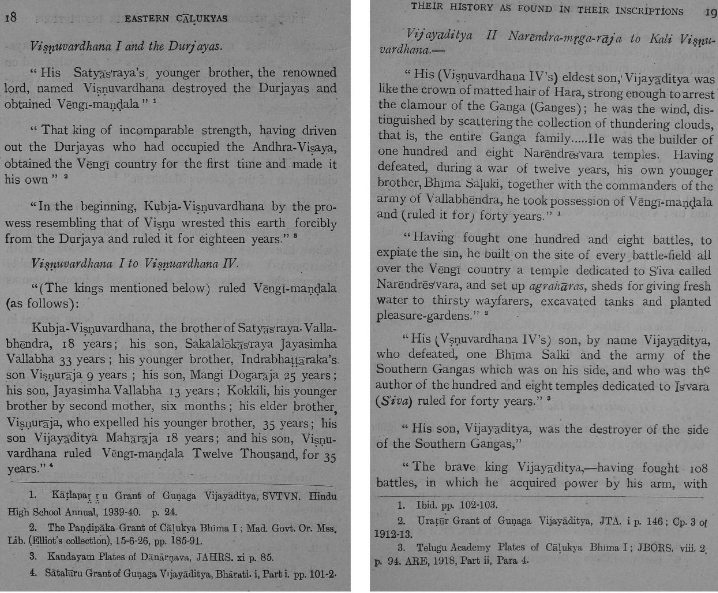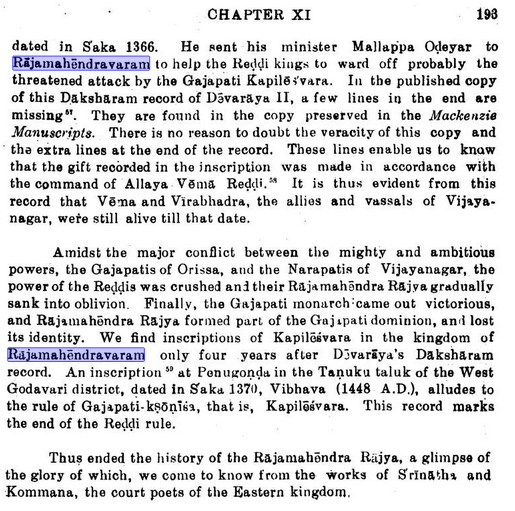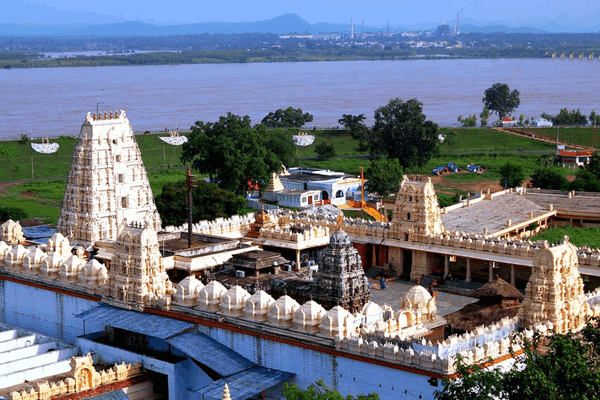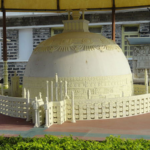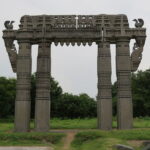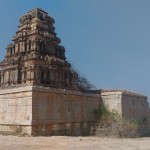Some cities are historically etched in military glory and others in religion, still others come to represent the cultural zenith of a people. For Telugus in general and the Andhras in particular, that city is the city of kings: Rajamahendravaram.
Background
Rajamahendravaram, better written as Raajamahendri has a long and storied place in the annals of the Aandhra people (now dubbed Telugu). It was the stronghold of Vengi and the capital of the Eastern Chalukyas and later Reddi kings. Nevertheless it is perhaps best known for the outstanding literature it produced, ever valued by Telugus perennially concerned with pedantry and le mot juste.
Location
Located in the original East Godavari district, modern Rajamahendravaram is nestled between the nearby picturesque Papikondalu.
“Papi Hills and its surroundings located near Rajamahendravaram is a visual treat to the spectators. There is a village called Perantala Palli on papi hills, which is visited by every person who goes there, because of its beautiful waterfall. Another spot is Pattiseema. Pattiseema is known for its natural beauty.” [1]

Perhaps its most well-known landmark is the Godavari Arch Bridge. However, this ancient city has many other sites of interest.
History
Raajamahendri …” The town has some traces of fine palaces, fort walls, etc., of the 11th century A.D. Nannaya, the poet laureate, who was called ‘Adi Kavi’ belonged to this place“.
Many have theorised that the city itself antedates the Eastern Chalukyas.
“Rajamahendravaram was previously known as Rajahmundry, it was the first capital of many known Telugu Kingdoms. The Chalukya ruler Raja raja Narendra ruled this city around 1022. The city has traces of 11th century fine palaces and fort walls. The archeological evidence suggests that the city may have existed far before the Chalukyas.” [1]
“It is also one of the Hindu pilgrimages. There are a number of temples here like the Kotilingalu (10 million Sivalingas) temple on the bank of the river Godavari. The city hosts holy congregations called the Pushkaram that takes place only once in every 12 years”. [1]
Nevertheless, it is best associated with the Eastern Chalukyas, who are responsible for its modern fame, as capital of the Vengi region, and cultural capital of Andhra desa itself.
Eastern Chalukyas of Vengi
- Vishnu Vardhana (624-642)
- Jayasimha Vallabha I (641-673)
- Vishnu Vardhana II (673-682)
- Mangi Yuvaraja (682-706)
- Jayasimha Vallabha II (706-718)
- Vishnu Vardhana III (719-755)
- Vijayaditya I (755-772)
- Vishnu Vardhana IV (772-808)
- Vijayaditya II (808-847)
- Gunaga Vijayaditya (848-891)
- Chalukya Bhima (892-921)
- Ammaraja I (921-927)
Chola Interregnum (921-945CE)
Chalukya-Cholas of Rajamahendri
- Danarnava (970-973)
- Shaktivarma I (1000-1011)
- Vimaladitya I (1011-1018)
- Raja Rajendra (1019-1061)
- Shaktivarma II (1061-1062)
Vengi Chalukya Restoration
- Ammaraja II (945-970)
- Danarnava (970-973)
- Jatachola Bhima (973-1000)
- Shaktivarma I (999-1011)
- Vimalayaditya (1011-1018)
- Raja Raja Narendra (1019-1061)
- Vijayaditya III (1061-1075) [3, 310]
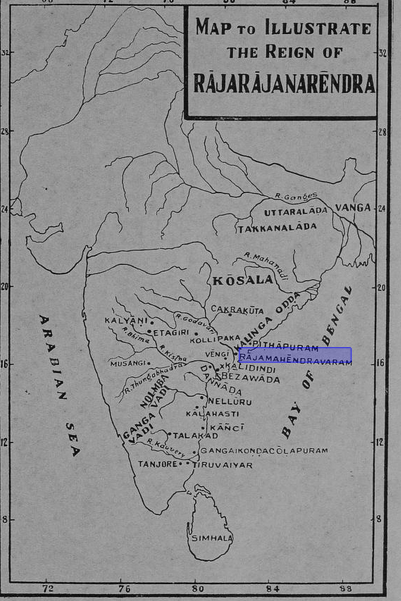
“After the sack of Vengipura and also Vijayawada Ammaraja I felt the need to build a new capital strategically located for conducting campaigns against his enemies, both within the kingdom and outside. So on the northern bank of the river Godavari he founded a new city and named it Raja Mahend[ri] after his title Raja Mahendra. Within a short time Raja Mahendri or Rajahmundry, as it is popularly called, developed as the cultural capital of the Andhras, a position it still retains.” [11, 45]
However, it was Raja Raja Narendra who was primarily responsible for its growth and fame. His patronage of Nannayya Bhatta, the first author of the Andhra Mahabharatamu, was responsible for the literary development of the Telugu language.
The reach and impact of the Eastern Chalukyas waxed and waned over the ages, but found its root in the famous defeater of Harsha Vardhana himself. “Pulakesin II, the renowned ruler of Chalukyas conquered Vengi (at a battle near Eluru) in 624 from Vishnukundinas and installed his brother Kubja Vishnuvardhana (624- 641) as its ruler. Vishnu Vardhan after an interval established himself as independent monarch, the first of a long line of powerful sovereigns.His dynasty, known as the Eastern Chalukyas, ruled for a century. Vishnuvardhana extended his dominions up to Srikakulam in the north and Nellore in the south.”

Kakatiya rule then followed the Chalukya-Chola imperium. The Reddi period has already been discussed in detail. However, here is a brief summation:

Though the Delhi Turks would briefly claim Rajamahendravaram for ~3 years, the Musunuri Nayaks quickly overthrew them. They were followed in succession by the Reddi Raajas, Vijayanagara, and the Gajapathis, before the city finally fell to moslem invaders. The qutb shahis would claim it in 1540 CE, briefly reverting, then flipping back from Gajapathis. What followed, however, was more conflict, with the mughals and their asaf jah nizam appointees holding sway. In this disorder, european colonisers would seek to establish a bridgehead. [11]
Colonial Era
In the disorder that follows foreign conquests, merchant-adventurers often swoop in, sometimes temporarily in the case of the dutch and the french or extensively in the case of the british. Per prisons.ap.gov.in:
“The Dutch India Company…established a Fort for storage of their merchandise in the year 1759 at Rajamahendravaram. Later this fort was occupied by the British East India Company. They also used it for the storage of merchandise. The British rulers converted this Fort into a local Jail in the year 1864.“
The cowardly nizam of Hyderabad was known for being the first “native indian” prince to make a treaty of subsidiary (read: subservient) alliance with the East India Company. As a result, Rajamahendravaram was handed over to the british. “The Nizam also made brisk preparations for war. It was, however, prevented with the conclusion of a treaty where by English agreed to hold the Northern Circars on payment of a tribute, accepting at the same time to furnish the Nizam with some troops. This treaty was confirmed by another treaty in 1768. Hasan Ali Khan`s lease expired in AD 1769 and Rajahmundry and Eluru came under the control of the newly constituted chief and council at Machilipatnam. The Zamindars came into prominence during the period preceding the transfer of the district to the English”
This vicinity, however, is also the site of the famous Rampa Rebellion, featuring Alluri Seetharaama Raju. The area was known for its tribal uprisings and opposition to foreign rule.
“The Rampa Rebellion of 1922, also known as the Manyam Rebellion, was a tribal uprising, led by Alluri Sitarama Raju in Godavari Agency of Madras Presidency, British India. It began in August 1922 and lasted until the capture and killing of Raju in May 1924. After the passing of the 1882 Madras Forest Act, its restrictions on the free movement of tribal people in the forest prevented them from engaging in their traditional podu agricultural system, which involved shifting cultivation.”
Raajamahendri, along with the rest of what was then the Madras Presidency, would join independent India in 1947.
Art

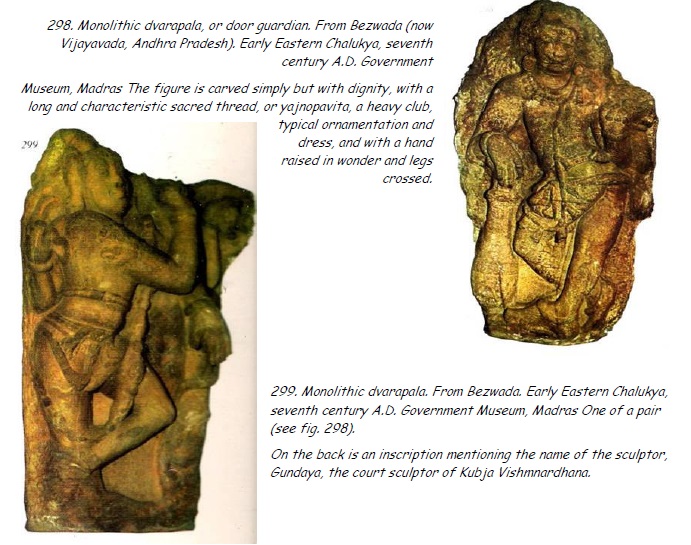
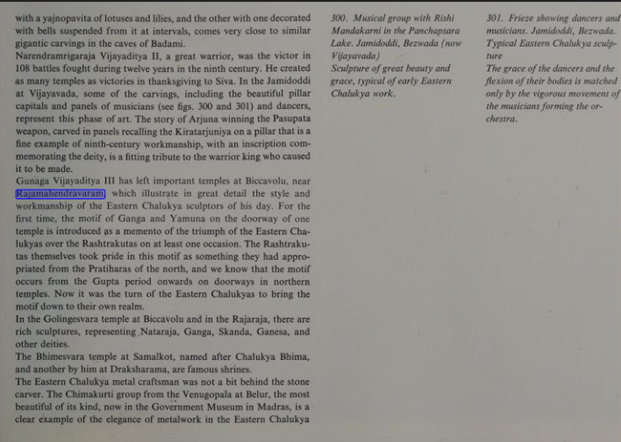
Whatever was or might have been, there are modern sculptures today constructed in remembrance of the city’s eminent personalities.
Literature
As with the Chatussasti kalaa, literature is an art onto itself. Modern Telugus in their quest for local one-upsmanship and poetic games of pedantry taking punning and paronomasia to its absolute stilted ends. And yet, quality literature once found its place here amid the patronage of the royal Raajas of Raajamahendri.
Poet Nannayya Bhatta is regarded as the “Aadhi Kavi” of Telugu literature. He was appointed by Rajaraja Narendra Chalukya to pen the Mahabhaaratham in Telugu, so as to be accessible to the masses. Nannaya left the work unfinished. The remaining Parvas would be completed by Tikkana and Erranna respectively, forming the Kavi traya of Telugu.
“From the time of Raaja Raaja I Caalukya, the Andhra mandalikas the men of the soil, who [owed] their allegiance to the Caalukya Cola monarchs (the descendants of Raaja Raaja’s son, Kulottunga Cola I), took up voluntarily the duty of supporting their native language Telugu as against Sanskrit and accepted dedication of Telugu works. Ever since that time, the subordinate mandalikas of the coastal Andhra country took pride in patronizing Telugu poets, and well earned the title of sikavikeera-sahakaaras. The stone records of the mandalika subordinates of the twelfth and thirteenth centuries contain many Telugu poems of great merit, which can well stand comparison in poetic beauty, diction and alamkaara with any classical Telugu poem produced during that age.” [10, 492]
Painting
As for the more modern, Raajamahendri is also the land of the famous oil painter Damerla. As Many as 450 paintings are credited to him over the course of his brief life.
“Damerla Rama Rao, a genius par excellence, is remembered forever for his art work which is equal to that of his predecessor Raja Ravi Varma who lived nearly a century before him. Though he lived only for 28 years, he produced marvelous collection of oil paintings, water colour paintings and even pencil sketches.”
Architecture
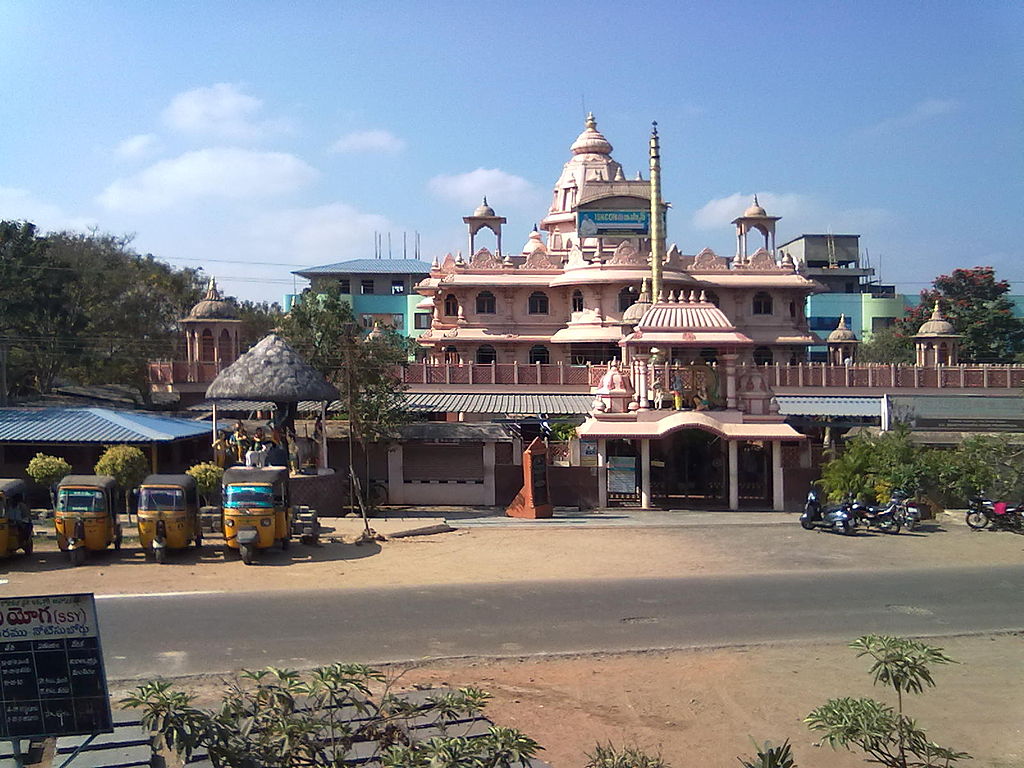
“Rajahmundry is home to a few famous temples that make this spot a pilgrimage spot. These are some famous [places] that one must visit: Draksharama, Kotipalli, Samalkot, Pattiseema, Ryali, Maredumilli, Dowleswaram, Annavaram, Dvaraka Tirumala, Iskon Temple.”
Raajamahendri is a melange of modern, medieval, and ancient. It is a combination of the native Indic with colonial turkic and british influences. Some structures were repurposed, like the Venugopala Temple (now maseed) and the dutch storage fortification, now british-era prison. Others, however, are brand new. the Iskcon temple is one such lovely example. Though the architectural style is not local, it has managed to blend in to the landscape.
Switching back to the ancient, however, is one that honours the historical.“The historical story related to Eastern Chalukya King of Vengi, Raja Raja Narendra, who ruled during the 11th century and Prince Sarangadhara is his only son who is an epitome of all virtues and valour. “ [2]
This temple has become prominent in the long history of the city. It is living proof of the antiquity of the structures here.
“A small stone slab measuring three feet long and two feet wide at 1,000-year-old Sarangadhareshwara Swamy temple in the historical city is attracting many people including tourists and historians even today. “ [2]
Not too far away is the famous Pancharama Kshetra known as Draksharama.
Perhaps most picturesque, however, is the Dvaraka Tirumala Temple:

It also features a famous statue in homage to Annamacharya. However, not all architecture stands in line with its original purpose. Some has been, as colonial and neo-colonial historians would say, repurposed:
Venugopala Temple
“The name “Ghiyas Uddin Tughlaq” can be seen on an inscription in Rajahmundry mosque till today. Also, the coins found in the excavations near Eluru and a chaatu padyam found in Nellore district proves the rule of Muslim rule during this period in coastal Andhra. The big mosque in Rajahmundry is one of the oldest Mosques in the country and is the only historic monumental structure that exists in Rajahmundry today. According to researcher, Alaxendar Rios, this mosque was built on an existing Venugopala Temple (court temple of chalukyas during that time) and the pillars of front portico and the inside wall coverings resemble a Hindu temple. He further states that this is a good example of a Hindu temple which retains its original features of a Hindu temple and has been converted into a muhammadan mosque”
Fort
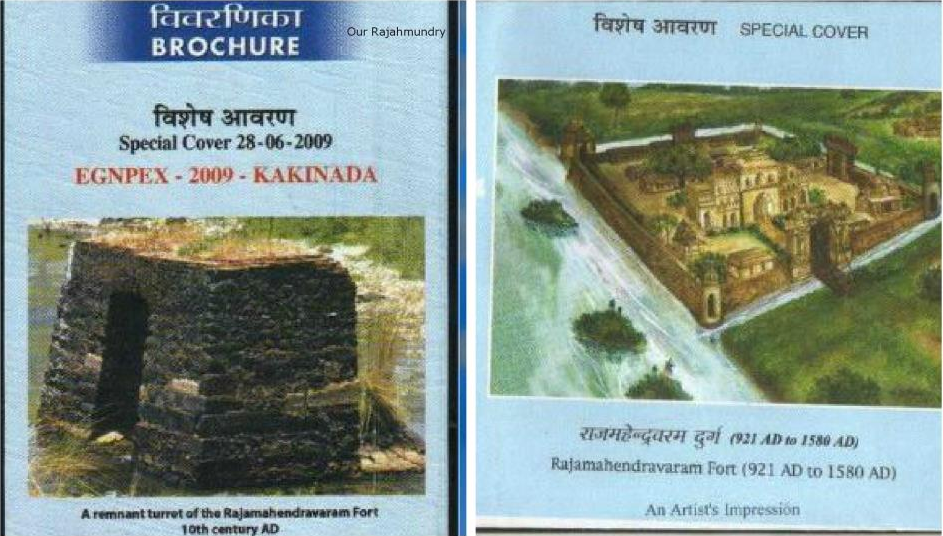
Little discussed is the existence of Rajamahendravaram fort. Its antiquity, attested to by various historical societies, has been proven via the existence of a tunnel in Draksharama (not far from Kakinada).
In the see-saw of battles between the Vijayanagara Empire, the Gajapathi dynasty, and various turkic invaders, the fort of Rajamahendravaram, referred to in various historical sources, would have fallen into decrepitude by 1580 CE. It was last in the position of native Hindu rulers around 1540, before it, and the city of Rajamahendravaram, fell to Golkonda. Its history, however, dates back to the Eastern Chalukya dynasty itself.
Raajamahendri was a City of 5 Citadels: Hemagiri/Vemagiri, Dhavalagiri (Dhavaleshvaram), Padmagiri, Bhadragiri (Pattiseema), & Raamagiri. Portions of it can also be found in the market today and near the Dowleshwaram (a.k.a.Dhavaleshwaram) barrage.
Conclusion

As stated in our post on the Satavahana Dynasty, the history of not only the Dakshinapatha, but all of Bhaarathavarsha is interlinked. Dynasty competed with and inter-mingled with dynasty, direction connected with direction, and one region often enriched the other. However, there is a difference between Bhaaratheeyas contributing to a pradesa, and videshis claiming the land of Bhaaratheeyas. The case of Hyderabad-Telangana is case-and-point to a people who have lost sight of whom “their people” actually are.
Just as the Satavahanas hailed from Aandhra and spread to other regions, the Chalukya dynasty dominated the dakshinapatha. When a dynasty hails from another Indic region, it has a responsibility to integrate with and promote the local culture and eventually become part of it. Western Chalukyas hailing from Karnataka did precisely that, and their Eastern Chalukya brethren have become almost synonymous with Telugu. This is the model for “cultural enrichment” and give-and-take, not colonial displacement and cultural replacement on pretext of syncretism.
Inclusivity does not mean excluding one’s own or become a pushover for foreign imperialists and neo-imperalists. Law-abiding, non-bhaaratheeya foreigners (the true “settlers”) should be treated with basic respect and fairness, but that is not pretext to surrender claims to them or give them equal pedigree to the land. Every nation has its own home. It is time for Bhaaratheeyas to have theirs and for Telugus to re-learn what is actually theirs and who is actually “their people”.
Old colonial era libraries of Telangana were called :““Andhra Bhaasha Nilayamulu” “Vemana Andhra Bhasha Nilayam.” “Raja Raja Narendra Andhra Bhasha Nilayam”“. One was constructed in “1901, in Ramkoti, Hyderabad and was named Sri Krishnadevaraya Andhra Bhasha Nilayam. This library later became a hub for cultural and political activity for Telugus suffering under Nizam rule.” It is “Why Telugu Land is Called Andhra Pradesh”
Rajamahendravaram, therefore, stands for this cultural self-respect. It is the true Teluguthanam Telugu netas once spoke about. It recognises the difference between Bhaaratheeya and non-Bhaaratheeya, as well as a Telugu and non-Telugu, and welcomes people as per their behaviour and intention. Bhaaratheeyas, such as the Kannada-origin Chalukyas who promoted Telugu, are welcome—dora nizami slaves and turkic razakars who insult telugu…not so much…Turncoats who join ranks with this ilk should not expect community support should their calculations go awry.
Support your own—that is the way of the world. That is why it is not rootless cosmopolitans but rooted cosmopolitans who are required in any inclusive set up welcoming all religions. The culturally inclined kings of Rajamahendravaram represent precisely that.
References:
- About Rajamahendravaram. Government of Andhra Pradesh. https://cdma.ap.gov.in/en/about-rajamahendravaram
- “Rajamahendravaram: Sarangadhareshwara temple, a famous tourist hub”. The Hans India. https://www.thehansindia.com/andhra-pradesh/rajamahendravaram-sarangadhareshwara-temple-a-famous-tourist-hub-601477?infinitescroll=1
- Rao, T.Dayakar. Trade and State Craft in Medieval Andhra: A Reappraisal (600-1600 AD). Delhi: B.R.Publishing. 2016
- Bussagli, Mario & Sivaramamurti Calambur. 5000 Years of the Art of India. New York: Harry N. Abrams Inc.
- South-Indian inscriptions (texts) : Telugu inscriptions from the Madras presidency
- Dahiya, Poonam Dalal. Ancient and Medieval India (for UPSC Examinations). Chennai: McGraw Hill Education. 2017
- Murty, K.V. Krishna. Ancient Indian Mathematicians. Hyderabad: Institute of Sci.Research on Vedas. 2010
- Venkataramanayya,Dr.N. The Eastern Chalukyas of Vengi. Madras: Vedam Venkataraya Sastry.1950
- Rao, T.V.Subba. Ballad Poetry in Telugu. 1968
- Malampalli, Somasekhara Sarma. History of the Reddi Kingdoms.Delhi:Facsimile Publ. 2015
- Rao, P.R. History and Culture of Andhra Pradesh. New Delhi: Sterling. 1994

